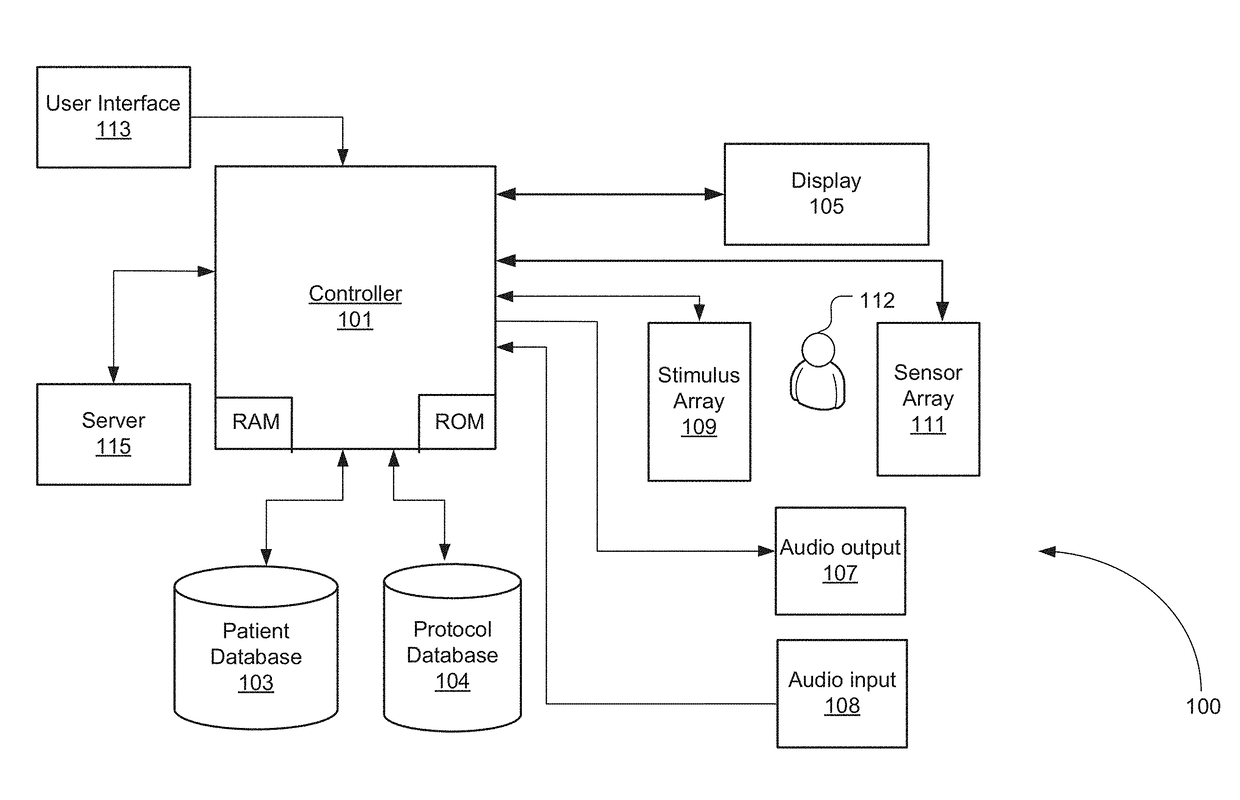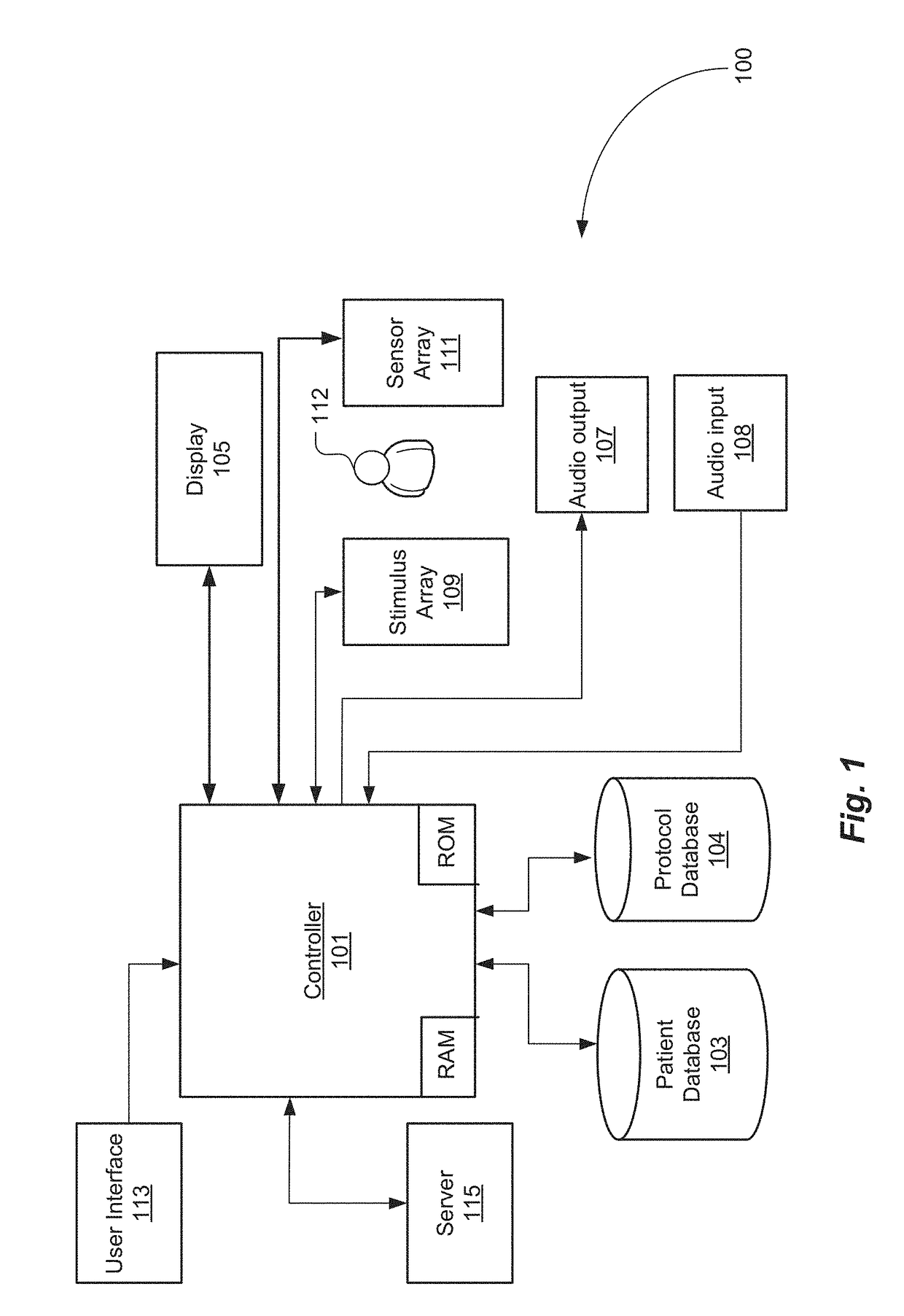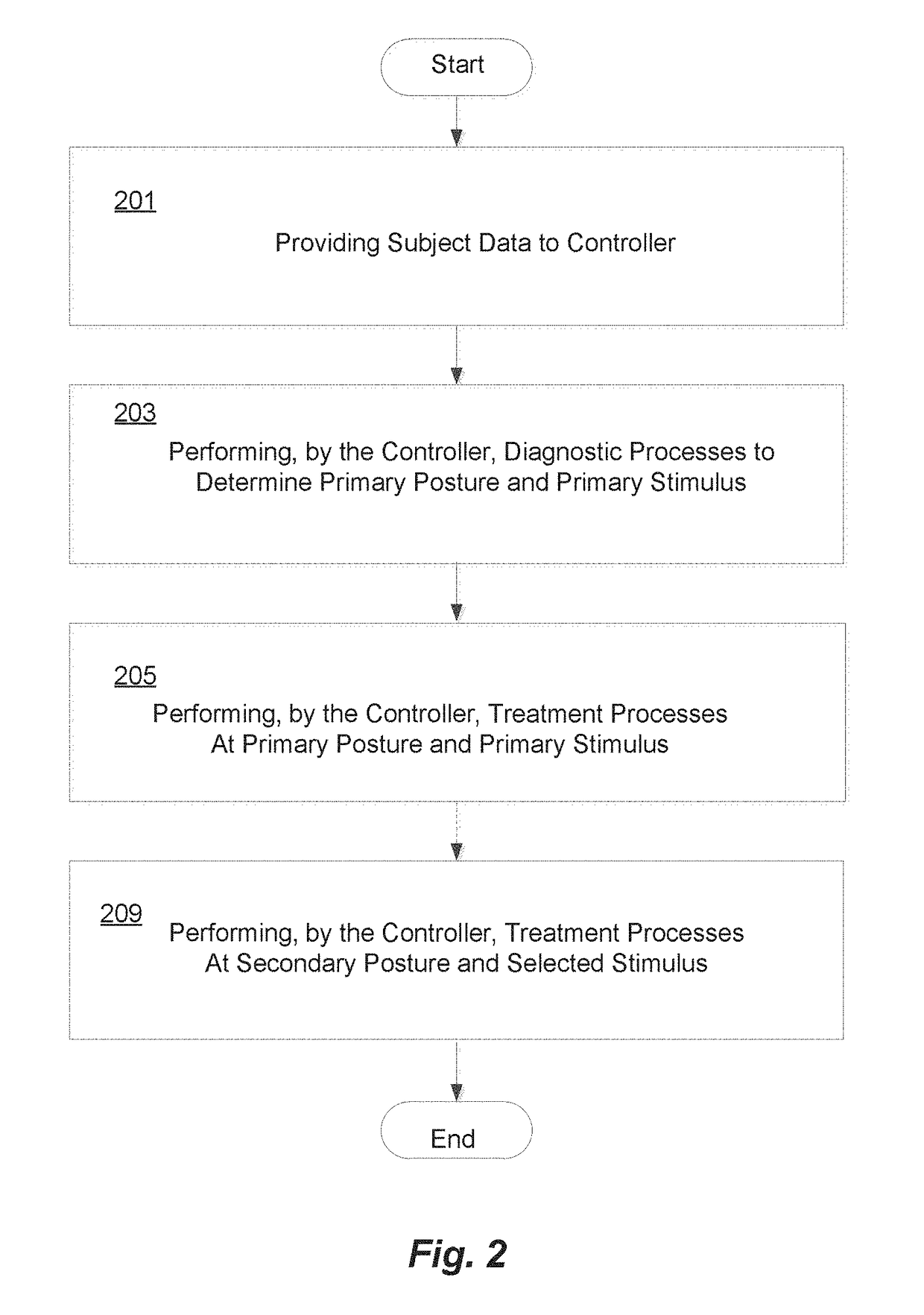Controller-Based Apparatus and Method for Diagnosis and Treatment of Acquired Brain Injury and Dysfunction
a control device and brain injury technology, applied in the field of control device for diagnosis and treatment of subjects, can solve the problems of disproportionate unemployment among this population, misdiagnosis of underlying brain function anomalies, and inability to maintain employment, and achieve optimal therapeutic effect, different physiological effects, and optimal effect of treatmen
- Summary
- Abstract
- Description
- Claims
- Application Information
AI Technical Summary
Benefits of technology
Problems solved by technology
Method used
Image
Examples
Embodiment Construction
[0009]Various embodiments of the invention described herein recognize that different body postures affect the autonomic nervous system differently, and therefore various external stimuli may have different therapeutic efficacies when a patient or subject is in each body posture. Postures, such as walking, sitting, standing, prone and supine, have different effects on the autonomic nervous system, and therefore some stimuli have different physiological efficacies while a patient or subject is in a given body posture. Disclosed embodiments of the present invention leverage this relationship to provide a controller-based apparatus that determines a combination of posture and stimulus that has optimal therapeutic effect, while minimizing health practitioner involvement. These controller based apparatus provides a treatment that stimulates the nervous system through a combination of noninvasive therapies that stimulate brain cells to increase their efficiency—this promotes the formation ...
PUM
 Login to View More
Login to View More Abstract
Description
Claims
Application Information
 Login to View More
Login to View More - R&D
- Intellectual Property
- Life Sciences
- Materials
- Tech Scout
- Unparalleled Data Quality
- Higher Quality Content
- 60% Fewer Hallucinations
Browse by: Latest US Patents, China's latest patents, Technical Efficacy Thesaurus, Application Domain, Technology Topic, Popular Technical Reports.
© 2025 PatSnap. All rights reserved.Legal|Privacy policy|Modern Slavery Act Transparency Statement|Sitemap|About US| Contact US: help@patsnap.com



